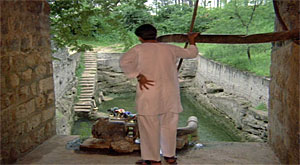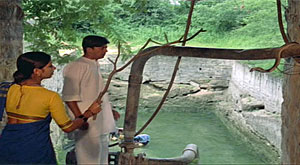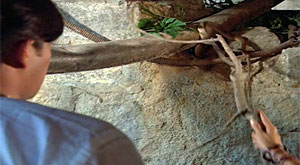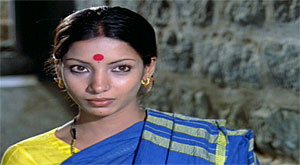Click on a picture to enlarge it
| Snakes in Movies Group Pages |
All Movie Snakes Must Die! |
| All Movie Snakes Want to Kill You! |
| Dancing With Snakes |
| Giant Monster Snakes |
| Pet Snakes |
| Shooting Snakes |
| Snake Bites |
| Snake Charmers |
| Snake Face |
| Snake Fights |
| Snake People |
| Snake Pits |
| SnakeSexploitation |
| Snakes & Skulls |
| Snakes Run Amok |
| Snakes Used as Weapons |
| Snakes Used for Comedy |
| Snakes Used for Food or Medicine |
| Snakes Used Realistically |
| Throwing and Whipping Snakes |
| Kinds of Snakes |
| Rattlesnakes |
| Cobras |
| Black Mambas |
| Boas, Pythons, and Anacondas |
| Kingsnakes and Tricolor Snakes |
| Unusual Species
|
| Settings |
| Snake in the House! |
| Snakes in Beds |
| Snakes in
Jungles and Swamps |
| Snakes In Trees |
| Genres & Locations |
| Snakes In Westerns |
| Snakes in Asian Movies |
| Herps in Australian Movies |
| Herps in James Bond Movies |
| Herps in Silent Movies |
| Herps in Spielberg Movies |
| Snakes in Movies | ||
| Ankur (1974) | ||
| Spoiler Alert ! Some of these pictures and descriptions may give away plot details that you might not want to know before watching the film. |
||
 |
 |
 |
 |
 |
 |
| This is a classic of Hindi cinema, and one that doesn't have any Bollywood singing and dancing. It's a social drama about a rich landlord's son, Surya, (Anant Nag) who takes advantage of his beautiful but poor lower caste servant woman, Laxmi, whose husband left her alone (starring Shabana Azmi in her first movie which helped to make her a major actor in the Indian New Wave of the 1970s and 1980s.) In the snake scene, Surya is leaning his arm on a pipe, watching some women fill their pots with water at a spring when he sees a cobra crawling on the pipe towards him. He cries to Laxmi for help. Laxmi grabs a branch and pokes it at the cobra until the snake crawls away. This shows how helpless the spoiled city boy is and how much he needs the country girl Laxmi's help. But he abandons her later when she's pregnant with his child and an embarrassment to his reputation, and turns to violence against her returned husband, showing clearly the inequities of the social structure where the rich can abuse the poor with impunity. The movie ends with a young boy's rebellious act against the landowner, but it is only a symbolic one. |
||